Figure 9-E11 shows a small block of mass m which is started with a speed v on the horizontal part of the bigger block of mass M placed on a horizontal floor. The curved part of the surface shown is semicircular. All the surfaces are frictionless. Find the speed of the bigger block when the smaller block reaches the point A of the surface.
A small block of mass m which is started with a velocity V on the horizontal part of the bigger block of mass M placed on a horizontal floor.Since the small body of mass m is started with a velocity V in the horizontal direction so the total initial momentum at the initial position in the horizontal direction will remain same as the total final momentum at the point A on the bigger block in the horizontal direction.From L.C.K. m:
Related Solutions
Figure shows a small block of mass m which is started with a speed v on the horizontal part of the bigger block of mas m placed on a horizontal floor. The curved part of the surface shown is semicircular. All the surfaces are frictionless. Find the speed of the bigger block when the smaller block reaches the point A of the surface.
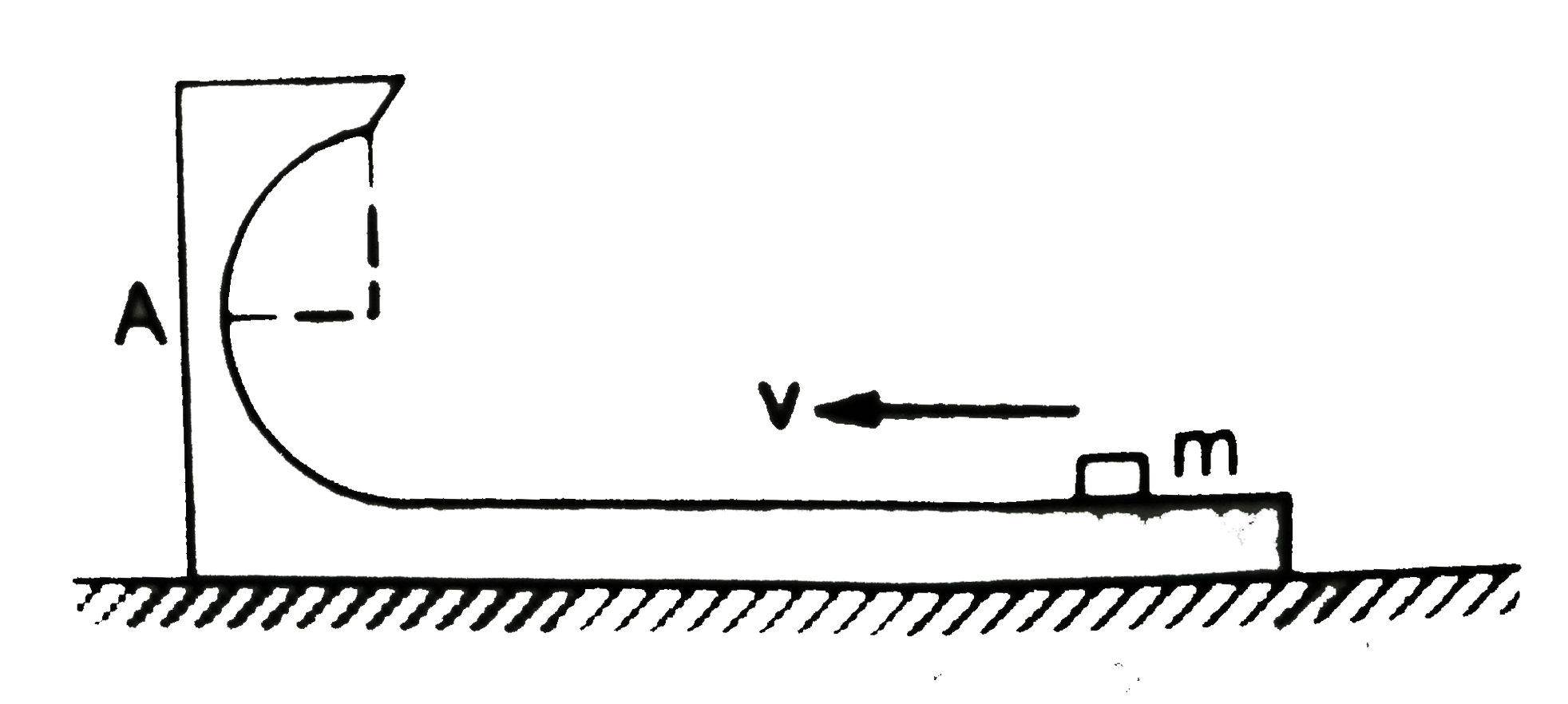 View Solution
View SolutionFigure shows a small block of mass m which is started with a speed v on the horizontal part of the bigger block of mas m placed on a horizontal floor. The curved part of the surface shown is semicircular. All the surfaces are frictionless. Find the speed of the bigger block when the smaller block reaches the point A of the surface.
 View Solution
View SolutionFigure shows a small block of mass m which is started with a speed v on the horizontal part of the bigger block of mas m placed on a horizontal floor. The curved part of the surface shown is semicircular. All the surfaces are frictionless. Find the speed of the bigger block when the smaller block reaches the point A of the surface.
 View Solution
View Solutionचित्र में एक M द्रव्यमान का बड़ा गुटका एक क्षैतिज सतह पर रखा हुआ दिखाया गया है। इसके क्षैतिज भाग पर द्रव्यमान का एक छोटा गुटका चाल से गति करना प्रारंभ करता है। चित्र में प्रदर्शित सतह का वक्राकार भाग अर्द्धवृत्ताकार है। सभी सतहों को घर्षणरहित मानें। जब छोटा गुटका सतह के बिंदु A पर पहुँचता है उस समय बड़े गुटके की चाल ज्ञात करें।
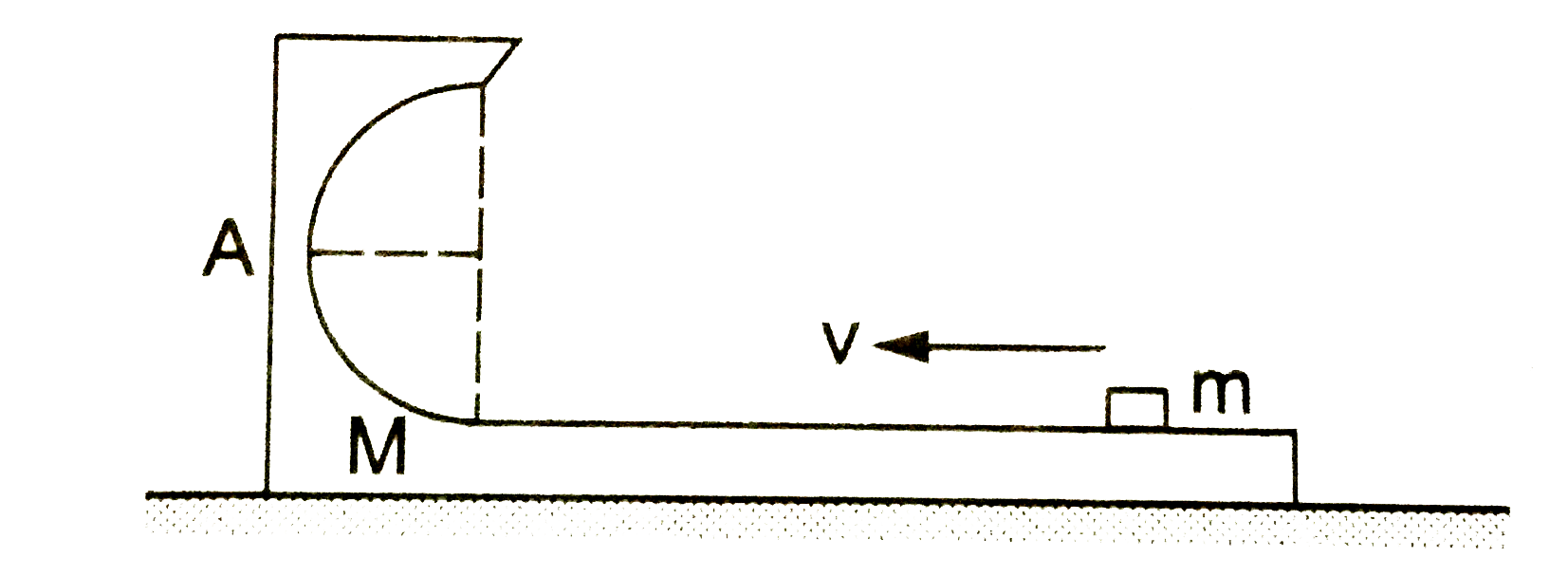 View Solution
View SolutionA block of mass M is placed on the top of a bigger block of mass 10 M as shown in figure. All the surfaces are frictionless. The system is released from rest, then the distance moved by the bigger block at the instant the smaller block reaches the ground :
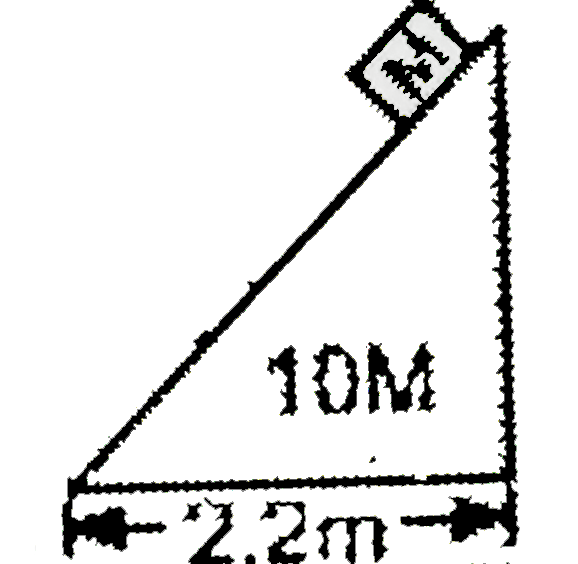 View Solution
View SolutionA block of mass M is placed on the top of a bigger block of mass 10 M as shown in figure. All the surfaces are frictionless. The system is released from rest, then the distance moved by the bigger block at the instant the smaller block reaches the ground :
 View Solution
View SolutionA block of mass M is placed on the top of a bigger block of mass 10 M as shown in figure. All the surfaces are frictionless. The system is released from rest, then the distance moved by the bigger block at the instant the smaller block reaches the ground :
 View Solution
View Solutionm द्रव्यमान का एक गुटका M द्रव्यमान के एक त्रिभुजाकार गुटक पर रखा हुआ है, जो स्वयं एक क्षैतिज सतह पर रखा गया है चित्र
जब छोटा गुटका क्षैतिज सतह पर पहुँचता है, उस समय त्रिभुजाकार गुटके का वेग ज्ञात करें। सभी सतहों को घर्षणरहित मानें।
 View Solution
View SolutionFigure shows a block of mass having a smooth semicircular groove of radius a placed on a smooth horizontal surface. A block of mass is released from a position in groove where its radius is horizontal. Find the speed of the bigger block when the smaller block reaches its bottom most position.
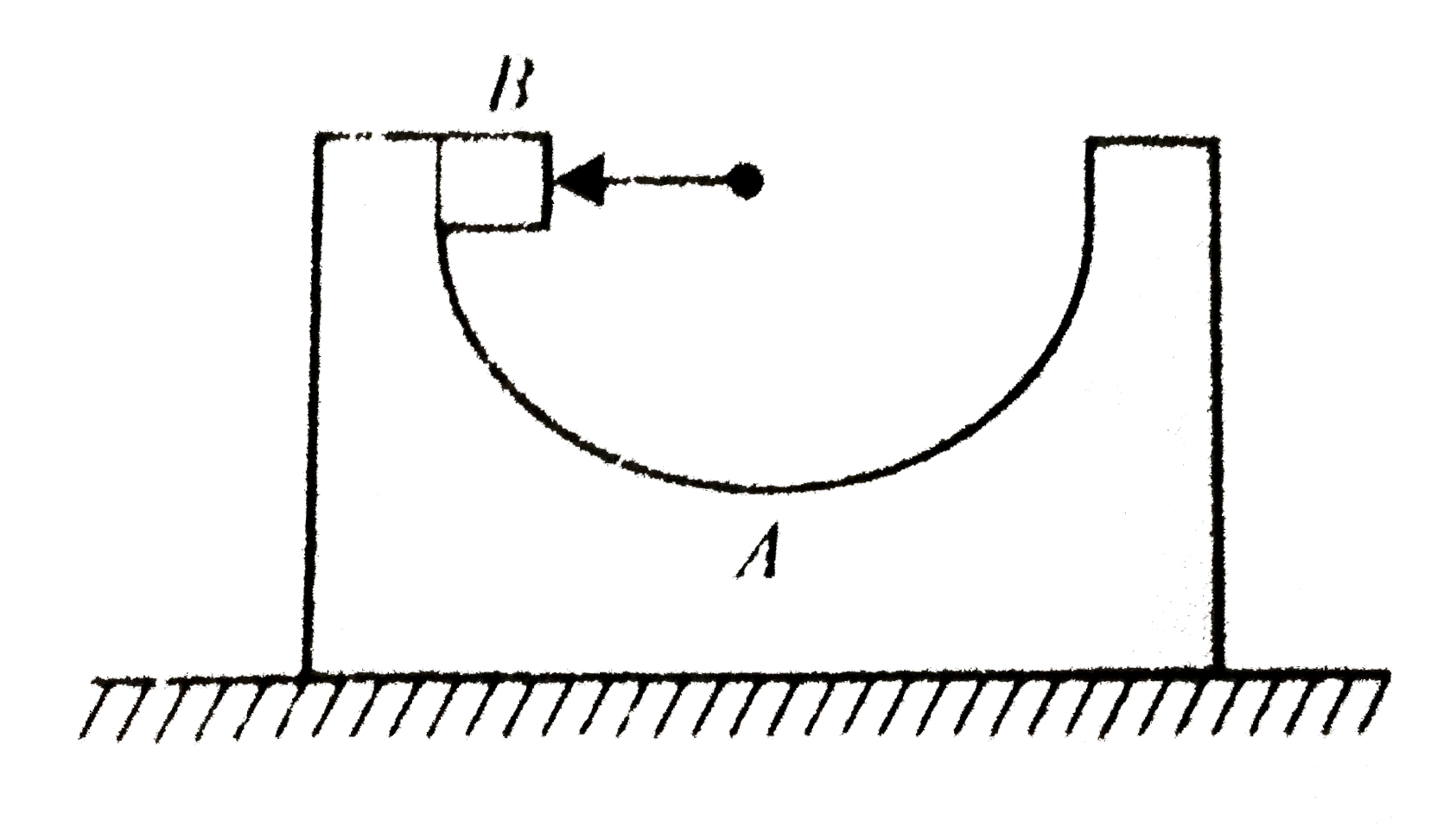 View Solution
View SolutionFigure shows a block A of mass 6 m having a smooth semicircular groove of radius a placed on a smooth horizontal surface. A block B of mass m is released from a position in groove where its radius is horizontal. Find the speed of the bigger block when the smaller block reaches its bottom most position.
View SolutionA block of mass M is placed on the top of a bigger block of mass as shown in fig. All the surfaces are frictionless. The system is releated from rest. The distance moved by the bigger block by the time the smaller block reaches the ground is
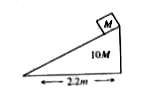 View Solution
View SolutionA block of mas m is placed on a triangular block of mas m, which in tunis placed on a horizontal surface as shown in figure. Assuming frictionless surfaces find the velocity of the triangular block when the smaller block reaches the bottom end.
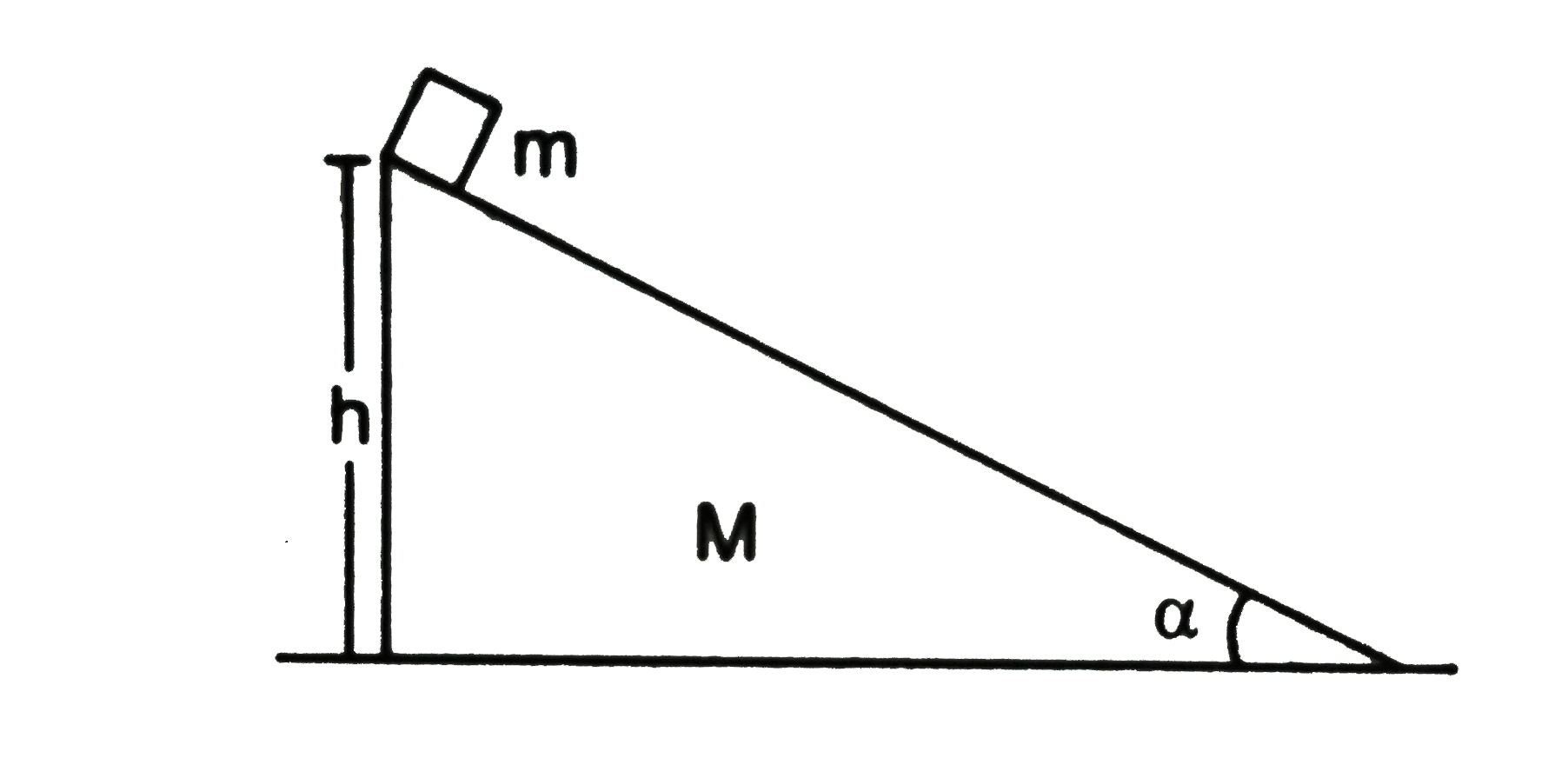 View Solution
View SolutionA block of mas m is placed on a triangular block of mas m, which in tunis placed on a horizontal surface as shown in figure. Assuming frictionless surfaces find the velocity of the triangular block when the smaller block reaches the bottom end.
 View Solution
View SolutionA block of mass M is placed on the top of a bigger block of mass 10 M as shown in figure. All the surfaces are frictionless. The system is released from rest, then the distance moved by the bigger block at the instant the smaller block reaches the ground :
 View Solution
View Solutionm द्रव्यमान का एक छोटा गुटका M द्रव्यमान के एक बड़े गुटके पर रखा हुआ है। इस बड़े गुटके की सतह दाहिने किनारे के पास क्षैतिज है तथा धीरे-धीरे मुड़ती हुई ऊर्ध्वाधर हो जाती है। बड़ा गुटका एक क्षैतिज सतह पर फिसल सकता है। छोटे गुटके को बड़े गुटके पर v चाल से चलाकर निकाय को स्वतंत्र छोड़ दिया जाता है। सभी सतहों को घर्षणरहित मानें।
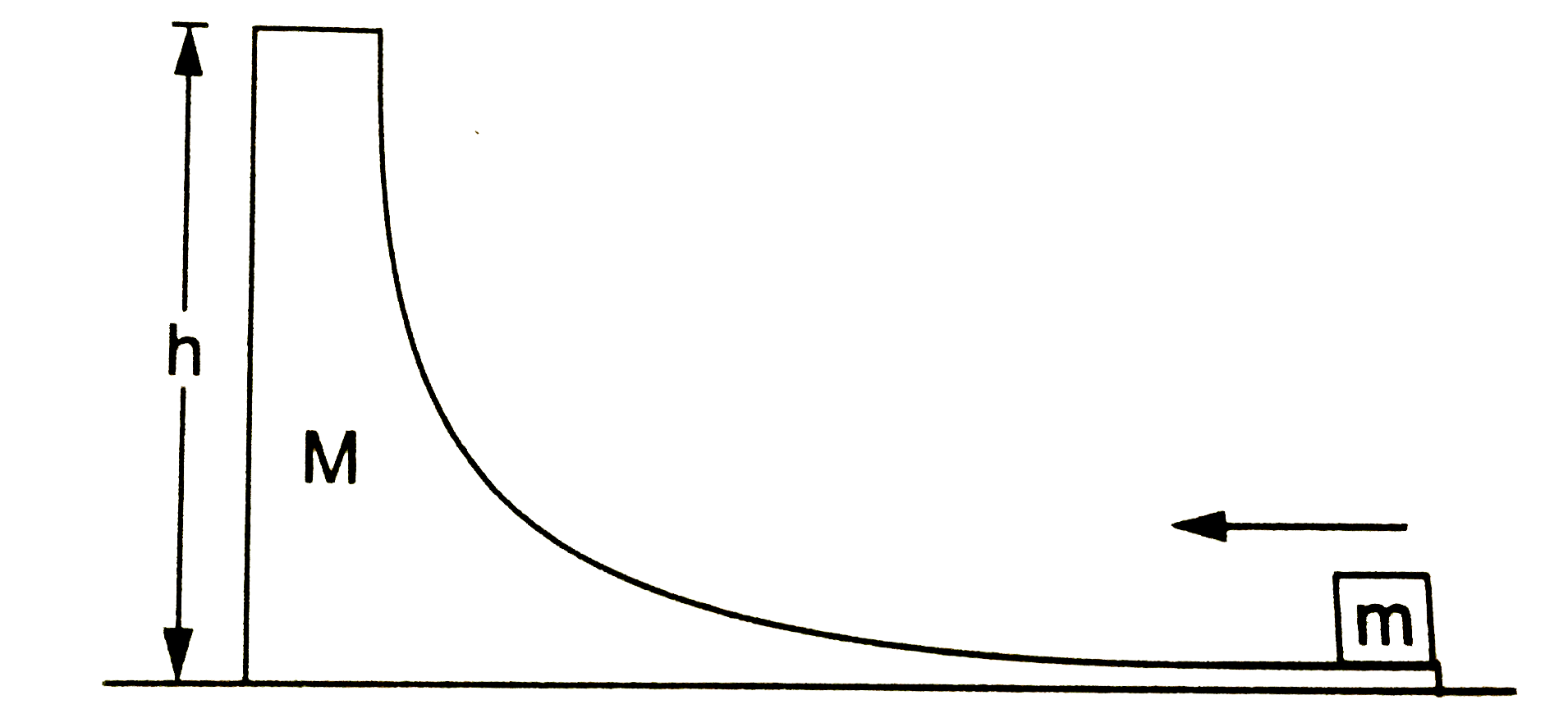
जब छोटा गुटका ऊर्ध्वाधर भाग पर पहुँचकर फिसल रहा हो, उस समय बड़े गुटके की चाल ज्ञात करें।View SolutionA block of mass M is places in the top of a biggr block of mass 10 M as shown in fig.All the surfaces are frictionless.The system is released from rest.Find the distance moved by the bigger block at the instant the smaller block reaches the ground.
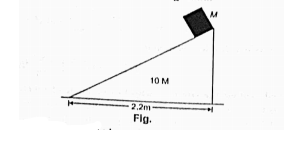 .View Solution
.View SolutionA block of mass Mis placed on the top of a bigger block of mass 10 M as shown in Fig. Adl the surfaces are frictionless. The system is released from rest. The distance moved by the bigger block at the instant the smaller block reaches the ground is x xx 10 m . Find the value of x.
View SolutionA prism of mass M is placed on a horizontal surface. A block of mass m slides on the prism, which in tum slides on the horizontal surface. Assuming all surfaces to be frictionless, find the acceleration of block with respect to prism.
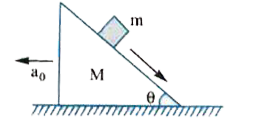 View Solution
View SolutionA prism of mass M is placed on a horizontal surface. A block of mass m slides on the prism, which in tum slides on the horizontal surface. Assuming all surfaces to be frictionless, find the acceleration of block with respect to prism.
 View Solution
View SolutionA prism of mass M is placed on a horizontal surface . A block of mass m slides on the prism , which in turn slides on the horizontal surface . Assuming all surfaces to be frictionless find the acceleration of block with respect to prism .
View Solution
